The Intellectual Structure of Game Research
by Paul MartinAbstract
This article maps out the main areas of game research through an analysis of co-citation and keyword co-occurrence patterns in 24,128 game research documents between 1966 and 2016. The keyword analysis identifies 4 communities: Education/Culture, Technology, Effects and Medical. Co-citation analysis identifies 5 communities: Education, Humanities/Social Science, Computer Science, Communications, and Health. Burst analysis of keywords reveals when key research themes emerged across the period. Key findings are: the main division in game research is between Communications and Health on the one hand and Education, Humanities/Social Science and Computer Science on the other; design is an important bridge between different communities; and there exists a gap in research on the game industry. The research is a broad overview and future research that targets specific communities to tease out more specific patterns is recommended, as is research targeting non-English language sources.
Keywords: game research, invisible colleges, keyword analysis, co-citation analysis, bibliometrics
Introduction
It is a truism that game research is multidisciplinary. A quick search on any academic research database will bring up a range of journals, papers, edited collections and monographs devoted, in one way or another, to the study of computer games. Scholars across the academic disciplines are working on computer game topics as diverse as machine learning, representations of gender, character design and cognitive rehabilitation. There are marked differences across this scholarly work in terms of theoretical frameworks, methodological approaches and institutional infrastructures, making it difficult, and perhaps unhelpful, to corral all game research under a single discipline. But for all its differences this assortment of research has something in common: an interest in better understanding computer games; how they are made, what they mean, what people do with them, how they might help or harm us.
Scholars interested in understanding games benefit from knowing not only the achievements of their disciplinary colleagues, but also the work done in other areas of the campus, and even outside the university’s walls. Frans Mäyrä (2009, p. 313) describes computer games as "multiple-layered systems and processes of signification that mix representational and performative, rule-based and improvisational modes in their cultural character." He argues that this makes interdisciplinarity a fundamental necessity in the cultural analysis of games. The same argument could be applied to other areas of game research. A particular disciplinary perspective runs the danger of focusing on one layer or process to the neglect of others. Multiple perspectives can help. Communications scholars studying addiction may achieve new insight through a solid understanding of game design, just as design theorists can be inspired or challenged through an understanding of the latest developments in artificial intelligence or educational theory.
Interdisciplinarity, however, is hard to achieve. Institutional factors and different ways of working may hinder collaboration; colleagues in different disciplines may be interested in different topics; and understanding the theoretical tradition and scholarship in an unfamiliar discipline is daunting. However, the scholar who wants different perspectives on games can get it, but needs to know where to look. The primary purpose of this paper is to provide a map of game research in terms of topics and intellectual traditions that will help orient the scholar wishing to understand the different approaches to game research.
To do this, the paper takes an invisible colleges approach to game research. An invisible college is a community of scholars that represents a particular topic area or approach in a field. They are invisible in the sense that they may not be recognised within the field as a school or movement but can be detected as such through a large-scale analysis of the field’s output (de Solla Price, 1965). The invisible colleges approach is useful for both descriptive and exploratory purposes. Librarians and external agencies will find a general description of the intellectual structure of game research helpful, as will scholars new to the field. Scholars already established in the field may also find it helpful to know how their own research complements or clashes with those in other disciplines and fits into the overall picture. This approach can also describe the historical development of a field by tracing the topics that have been important at different phases in its development. In the wider academic context, an historical analysis of game research serves as a case study for the development of new research areas. Historical analysis also helps to identify potential research fronts where new topics are becoming important. This descriptive element allows for a more exploratory and speculative discussion, where possible research gaps and areas for collaboration can be identified.
There are several literature reviews, systematic literature reviews, scientometric analyses, and surveys of game research from the perspective of particular disciplines or perspectives (e.g. Bragge, 2010; Carter, 2014; Coavoux, Boutet, & Zabban, 2017; Quandt et al. 2015; Smith, 2008). However, the diffuse nature of game research writ large makes a comprehensive literature review challenging. Melcer, Chen, Nguyen and Ibister (2015) deal with this by taking a network approach, looking at over 8,000 papers from 48 core game research venues and studying how keywords of papers cluster around particular game research themes. That paper identifies 20 research themes, seeing a fundamental separation between technical and non-technical fields and identifying the DiGRA and FDG conferences as important connectors between these fields.
The present research also uses keyword co-occurrence analysis to get a sense of the range of topic clusters in game research. It differs from Melcer et al’s (2015) paper in including a wider range of papers from outside the core research venues. It also supplements keyword analysis with author co-citation analysis to get a sense of the intellectual structure of game research in terms of scholarly influence as well as topic selection.
A recent Games and Culture special issue (Mäyrä and Sotamaa, 2017) reflecting on game studies as an academic field brought forth two further attempts to use scientometrics to discuss aspects of game research. In the first, Coavoux et al (2017) focus on the game genres most often analysed in game studies. In the second, Deterding (2017) argues that the establishment of game scholarship as a legitimate form of research has allowed scholars who have located themselves in game studies to migrate back to their home discipline (e.g. communications), transforming game studies into a narrow interdiscipline amongst other forms of games research. These analyses focus on game studies as a specific field within game research. The present analysis hopes to build on insights derived in these analyses, but widens the scope to look at game research in general.
Keyword Co-Occurrence Analysis
Keyword co-occurrence analysis uses the keywords an author or source has attached to a document as its data. Documents varied in the number of keywords and so 10 keywords were randomly selected for texts with 11 or more keywords. While it would be ideal to have keywords for every document, the database did not include keywords for every document. Texts that had no keywords were not included in the analysis. The keywords were stemmed, spelling normalized, and the common phrases "videogame", "computer game" and "digital game" were removed. These words were excluded because they do not provide information about the kind of game research that the document is reporting and their prevalence across the sample would likely identify false relationships. For the most common words similar keywords were merged (e.g. addictiveness and addiction, virtual reality and VR). This resulted in 150,688 keywords, and 9,996 unique keywords.
Each keyword is a node in the network. Sci2 software (Sci2 Team, 2009) was used to calculate the edges (i.e. connections) between these nodes. If two keywords occur together in two different texts they are linked by an edge. The more texts in which this pair of keywords co-occur, the higher the weight of that edge. A graph was constructed based on this keyword co-occurrence analysis and laid out in the graph visualisation software Gephi (Bastian, Heymann and Jacomy, 2009).
To determine the development of different topics over time, burst analysis was used (Kleinberg, 2002). This algorithm identifies any significant increase in the use of a particular keyword during a range of years across the period. It can identify new topics at particular points in the development of game research and can also identify research fronts emerging in recent years.
Author Co-Citation Analysis
Co-citation analysis is a way of determining the intellectual structure of a field by looking at citation patterns in that field. It can take the form of source, document or author co-citation. Author co-citation analysis was used for this study, following recommendations from Zhao and Strotmann (2015, p. 27) and Backhaus, Lügger and Koch (2011), as well as examples from a variety of fields (Chen and Lien, 2011; Small, 1973; Ferreira, Fernandez and Ratten, 2016). Here, each cited author is a node in a network, with edges linking authors who are cited together in at least one document in the sample. These edges are weighted by the number of times the authors are cited together. The cited authors were disambiguated following the technique outlined in Zhao and Strotmann (2015, pp. 109-112). Citation level was determined by absolute number of citations, where self-citation counts and where multiple citations in a single document only count once. This is in line with recommendations from Zhao and Strotmann (2015) and Chen and Lien (2011). Total number of citations was 575,649, with 220,238 unique authors cited.
A threshold of the top 300 most-cited authors was chosen. This is higher than in many other analyses that are field-specific. For example, Zhao and Strotmann (2015) recommend less than 200 and many analyses use around 100 (e.g. Ferreira, Fernandez and Ratten, 2016). Because game research is highly multidisciplinary, a larger sample was required to reflect the breadth of research. A smaller sample would have failed to account for those areas of game research where citations were less abundant, for example in computer science conferences, as well as some of the more recent developments in game research, such as health games. The number of citations for the 300 most cited authors ranged from 107 to 1,718, with an average of 234. These authors account for 12% of all citations in the sample.
The network analyses methods employed to determine the community structures of game research are outlined in the following section. Due to the size and diversity of game research as a field, the co-citation matrix has a large number of empty cells. That is, a large number of the main authors were not cited together at all. White (2003) warns that a co-citation matrix with many empty cells will tend to exaggerate similarities within clusters, and so the results must be seen as a general overview of game research to determine at a fairly high level the different clusters in game research.
Network Analysis
A number of network analysis terms are used throughout the paper to interpret the results of the analyses.
Citedness refers to the total number of citations an author has across the entire sample. It gives a general impression of the influence of the author in game research. Only the 300 most cited authors are used for the co-citation analysis.
The degree of a node (i.e. an author or a keyword) is the number of other nodes that connect to it. For a keyword, this means the number of other keywords that co-occur with it in the entire sample. For an author, this means the number of authors from the 300 most cited authors that are co-cited with that author in at least one document.
Strength is a measure of connectedness that takes into account both the number of different nodes a node is connected to (degree) and the number of connections a node has to each node it is connected to (weight). It is a good measure of the importance of the node to the network.
Centrality refers to how central a node is to the network. There are two measures of centrality used in this analysis: closeness centrality and betweenness centrality. Closeness centrality is the average distance between a node and every other node in the network. Betweenness centrality is the number of times a node appears on the shortest path between a pair of nodes in the network.
Communities are clusters of nodes that connect to each other more than they connect to nodes outside the cluster. Such clustering suggests a common theoretical or methodological framework or a common topic. In this analysis, the Louvain community detection algorithm is used (Blondel, Guillaume, Lambiotte and Lefebvre, 2008). This algorithm has been used previously in detecting communities through co-citation patterns (e.g. Wallace, Gingras and Duhon, 2008). In using this algorithm, it is necessary to determine what rate of clustering signals a community. A low density returns a large number of small communities (at an extreme, the same number of communities as nodes). A high density returns a small number of large communities (at an extreme, a single community for the entire network). This analysis determines communities at three different rates for comparison purposes. The main communities are determined at a density of 1.2. These communities are then separated from the network and further subgroups are determined using the same density. To see connections at higher levels, the same algorithm is also run on the entire network at a density of 1.5 and 3.0, returning a smaller number of large communities. In this way, it can be determined which communities are most affiliated and which are most resistant to integration into the network as a whole.
It is important to note what this analysis can and cannot do. It can provide an overview of the main communities in game research based on topic and intellectual influence. The co-citation analysis cannot capture more recent research as more recent scholarship has not had time to reach the threshold. To capture more recent scholarship, this paper supplements co-citation analysis with keyword co-occurence analysis.
The analysis reflects what is in the database, but the database is imperfect. Scopus’s coverage of social sciences is poor before 1996 and of humanities before 2001. This is particularly relevant in the burst analysis. We can be more confident of the development of research from 2001 on than before this date. Burst analysis from before 2001 is nevertheless included as, while we cannot conclude that absence of a keyword before that date means absence of research on that topic, it does give us a picture of the research that was happening at that time.
This analysis cannot and is not intended to evaluate the relative importance of different fields or individual authors. Citation patterns differ in different fields (Glänzel, 2007; Eom 2015). Furthermore, in this analysis only the first author in a cited work is included. The exclusion of co-authors who are not first author has serious implications for evaluative citation analysis (i.e. where the goal is to evaluate the contribution of individual scholars). Comparison tests suggest that it is less important if the goal is to determine the overall structure of a field (Zhao and Strotmann, 2015, p. 30).
Results
Following a short overview of the sample, the results of the keyword co-occurrence analysis will be reported, followed by the author co-citation analysis, and lastly the keyword burst analysis. Throughout the results section keywords will appear in bold, main communities derived by keywords or author co-citation in italicised bold and subgroups in italics.
Overview of Sample
Both keyword analysis and co-citation analysis require data from a research database. For this project Scopus was chosen as, unlike ISI, it includes books, and is stronger on social sciences and humanities (Zhao and Strotmann, 2015, pp. 78-79). A search was conducted in spring 2017 for sources (journals and conferences) and individual texts (books, journal articles, conference papers, chapters) using the keywords "video*game," "computer game" and "digital game", and this returned 24,128 documents. The first document found was published in 1966, and the last in 2016 (see Figure 1).
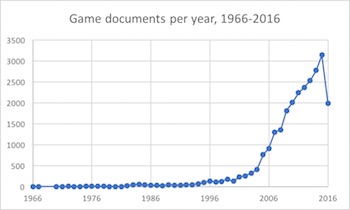
Figure 1. Academic texts on computer games in the Scopus database, 1966-2016 (click to expand).
The dip in number of publications in 2016 is due to a lag between the publication of a document and its registration with Scopus. The documents in the sample comprise conference papers (11,950), journal articles (10,714), book chapters (1,379) and books (141). 28 sources account for 25% of the documents (see Table 1). 169 sources account for the next 25%, 906 for the following 25%, and 4,525 for the remaining 25%. 3,350 documents come from a source with only one document in the sample.
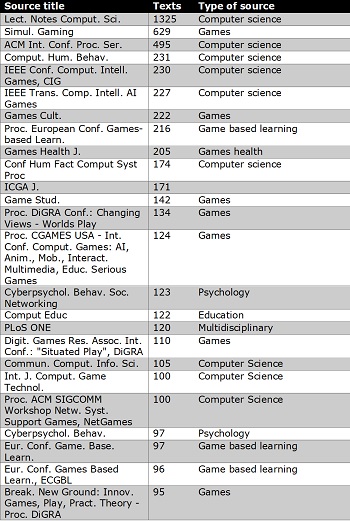
Table 1. 28 main sources for documents in the sample (click to expand).
Keyword Co-Occurrence Results
Looking at the network as a whole, the most important nodes in terms of citedness, strength, degree and centrality are summarised in Table 2.

Table 2. Most important nodes as measured by citedness, strength, degree and centrality. Keywords in bold appear in top 5 of every measure. Square brackets indicate where keyword appears outside of top 5 for that measure (click to expand).
As can be seen from the table, computer science-related keywords are very important within the network. AI, HCI and VR all are in the top 5 keywords for all measures. Game theory is in the top 10 in all measures. Interactive computer graphics is in the top 10 for all but citedness, where it is 15th.
Education also features as important. Serious games is in the top 5 for most measures, being sixth for degree. Game based learning is in the top 5 in terms of citedness and in the top 20 for the other measures.
Human, male and female are keywords with high strength but relatively low degree. This means they do not connect with many other words, but they tend to connect often to the same small group of words. The centrality values for these keywords are even lower, with male and female both outside the top 20 in both centrality measures. This suggests they play an important local role within their own area but are less important to research outside this area.
Four communities were identified based on co-occurrence of keywords (see Figure 2). These four communities account for 98.81% of the nodes (i.e. keywords) and 99.57% of the edges (i.e. connections between co-occurring keywords).
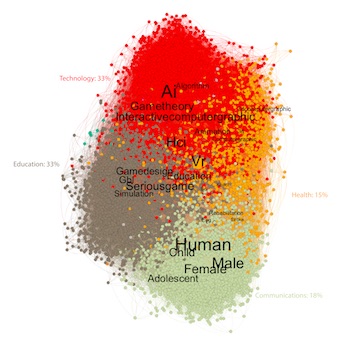
Figure 2. Graph showing relative position of the four keyword communities (click to expand).
Keywords were inspected to determine the character of each community, with particular attention paid to keywords with high strength. Based on this inspection the communities were identified as Education/Culture; Technology; Effects; and Medical. These communities are summarised in Table 3, together with the main keywords for citedness, strength and centrality. There is a high degree of agreement across these measures on which keywords constitute the main hubs for these communities.
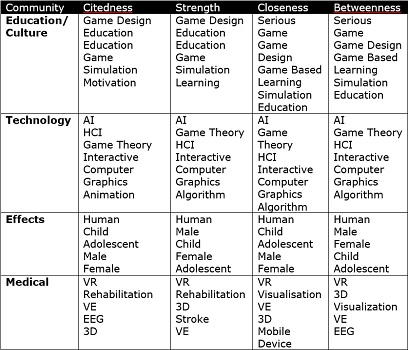
Table 3. Five top keywords in citedness (overall), strength (community), closeness (community) and betweenness (community) within each community (click to expand).
Depending on the specific document there may be significant differences in the topics these keywords indicate, but they loosely correspond to Juul’s (2009, p. 53) broad distinction between game-centric and player-centric approaches to game research. The game-centric (or, perhaps better, game-oriented) research is related to production (game design, AI, interactive computer graphics, animation, algorithm, visualization) and artifacts (education game, simulation, VR, VE, 3D, mobile device). The player-oriented research is related to player types (human, child, adolescent, male, female) and player actions/activities/behaviors (education, motivation, game based learning, HCI, game theory, EEG, rehabilitation, stroke). There is significant crossover between the communities in terms of these major themes, but broadly speaking Education/Culture is interested in production, artifacts and player behavior; Technology is interested in production and player behavior; Effects is interested in player types and Medical is interested in production, artifacts, and player behavior.
When the density resolution of the community detection algorithm is decreased, the four communities are reduced to three. The Medical community disappears, sending the more technical keywords (e.g. VR, VE and 3D) to Technology and its more health-related keywords (e.g. rehabilitation, stroke, cerebral palsy) to Effects. At a resolution of 2.5 we are left with just two communities. Education/Culture and Technology (together with the more technical keywords from Medical) take up about 76% of the graph, with Effects, together with the health-related words from Medical, taking up the remaining 24%.
Subgroups within these communities were identified by isolating each community and re-calculating community detection. This resulted in four or five subgroups that signal different topics, disciplinary affiliations or methodological approaches within the communities.

Table 4. Subgroups based on keyword analysis, together with main keywords in each subgroup (click to expand).
These subgroups illustrate a wide range of research topics within each community. We can see both player-oriented and game-oriented research occurring within each community. Some subgroups are focussed mainly on player-oriented research (e.g. the pathology subgroup of Effects), others on game-oriented research (e.g. the ai subgroup of Technology) but many are focussed on both (for example, the player experience and form subgroup of Education/Culture or the HCI/animation subgroup of Technology).
Author Co-Citation Results
In the author co-citation analysis five communities were derived based on co-citation patterns, and these account for the entire network of the 300 most cited authors (see Figure 3).

Figure 3. Author co-citation graph for 300 most-cited authors in sample (click to expand).
The character of each community was determined by manual inspection of the authors constituting the community, with particular attention to those with high strength values who are also writing about computer games (see table 5). The manual inspection involved looking at the main authors’ disciplinary title and/or department affiliation and the titles and publication venues of highly cited documents in a given community.
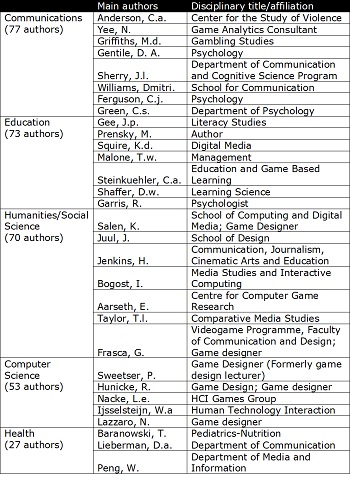
Table 5. Authors with highest strength in each community, with current disciplinary affiliations derived from their titles or departments (click to expand).
Table 5 shows the 10% of authors with the highest strength value in each community, together with a disciplinary affiliation based on their disciplinary title or department as of July 2016. In the largest community, the authors writing about games tend to take a communications approach to topics such as effects and addiction and are generally in communications or psychology departments. Authors writing about games in the second group tend to be located in education departments and institutions and are writing about digital game based learning. The third community are generally in humanities and social sciences departments or are independent designers or game developers. They are generally writing about game form, cultures and design. The fourth community are generally writing about technical aspects of game production and are located in computer science departments. The last group are generally writing about games for health or the effect of playing games on health. They are generally located in communications or health departments.
These communities broadly reflect the four communities in the keyword analysis, as described in Table 6, though Education/Culture has split into the two separate communities of Education and Humanities/Social Sciences. There is also a slight cross-over between the keyword communities of Effects and Medical and the citation communities of Communications and Health. That is, Effects corresponds most closely to Communications but contains some topics that correspond to Health, while Medical corresponds most closely to Health but contains some topics that correspond to Communications.
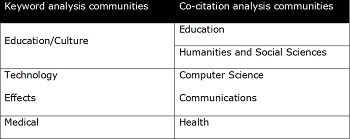
Table 6. Comparison of keyword communities and co-citation communities (click to expand).
Many of the most cited authors in game research are not writing about games. Table 7 shows the main non-game scholars in each community. In general, authors that do not write about games are still part of the discipline of the community in which they are found. Computer science is quite unusual in this regard as several of the main non-game authors cited are also non-computer science authors.
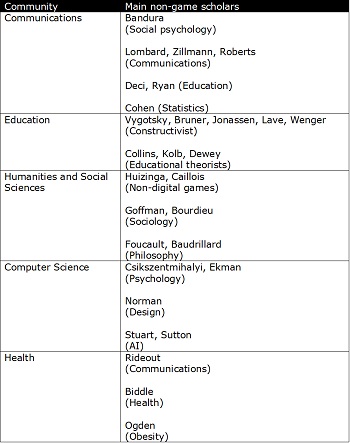
Table 7. The main non-game authors in each community (click to expand).
These communities break down into quite clearly distinguishable subgroups at a lower resolution. Again, these are named based on manual inspection of the cited works of the authors. The subgroups are reported in Table 8, together with authors with highest strength from each subgroup.

Table 8. The subgroups of cited authors, together with main authors in each subgroup (click to expand).
Like the terms in the keyword analysis, the subgroups here can be categorised according to their main focus. Some of the subgroups focus on players (e.g. the player experience subgroup of Communications) and others on games (e.g. the form subgroup of Humanities and Social Sciences or the game AI subgroup of Computer Science).
The distinctions between the subgroups are sometimes methodological, sometimes topical and sometimes theoretical. For example, in Communications the effects and addiction subgroup and the player experience subgroup are both interested in the relationship between players and games, but the former tends to adopt an experimental approach, the latter a sociological approach involving surveys and interviews. The distinction between the pure AI and games AI group in Computer Science is more topical. The former group is interested in using games to test and develop AI theories and technologies. The latter is interested in applying AI to games and game design. The distinction between the constructivists and the motivational theorists in Education is theoretical, with the former influenced mainly by educational theorists like Lave and Wenger and the latter mainly by theorists like Malone and Lepper.
At a higher resolution of 1.5, Education and Humanities/Social Sciences merge together, along with the design and player analytics subgroup and most of the games AI subgroup in Computer Science. This new community comprises 53% of the graph. The remainder of Computer Science (mainly the pure AI subgroup) comprises 8%. Health and Communications also merge, making up 38% of the graph. At a density of 3.0 the Health/Communications and Humanities/Social Sciences/Education group merge, leaving a small group of 5% Computer Science authors in a separate community. This is mainly the pure AI subgroup.
Table 9 shows connections across the communities, taking into account both keywords and author co-citations. It highlights keywords and author subgroups that occupy a position near the border of the different main communities.
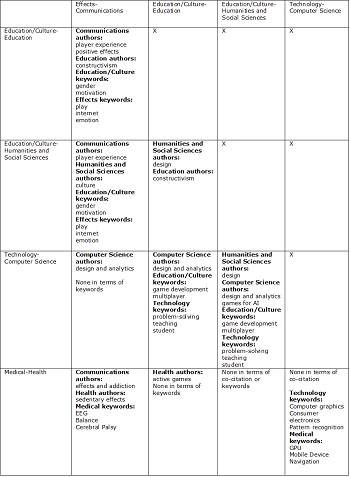
Table 9. Co-citation and keyword relationship across communities (click to expand).
Most pairs of communities have something in common with each other, with the exception of Medical-Health and Education/Culture-Humanities and Social Sciences, which are not affiliated either in terms of keywords or co-cited authors. Technology-Computer Science is affiliated with Effects-Communications in terms of the author subgroup of design and analytics but not in terms of any keywords. Similarly, Education/Culture-Education is affiliated with Medical-Health through the author subgroup active games, but not in terms of any keywords. Lastly, Medical-Health is linked (quite strongly) in terms of keywords to Technology-Computer Science but not in terms of co-citations.
Keyword Burst Analysis Results
The burst analysis looked across the entire period, but for clarity this report will divide the period into five stages: 1966 to 1979 (Figure 4), 1980 to 1989 (Figure 5), 1990 to 1999 (Figure 6), 2000 to 2009 (Figure 7) and 2010 to 2016 (Figure 8).
Stage 1: 1966 to 1979
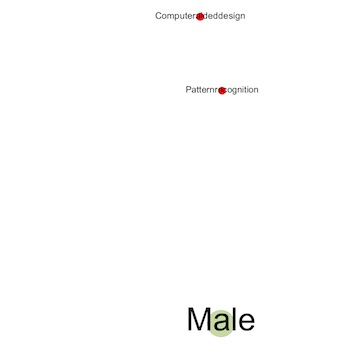
Figure 4. Burst analysis for period 1, 1966-1979 (click to expand).
There are relatively few documents in this stage, with only three new topics identified. Two of these keywords are associated with Technology, indicating the early importance of computer games in the field of computer science. The other keyword is associated with Effects.
Stage 2: 1980 to 1989
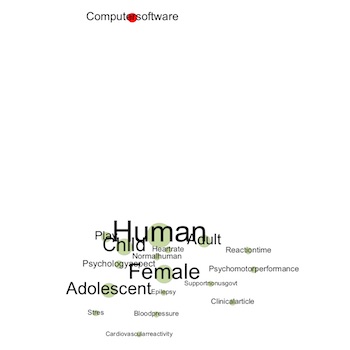
Figure 5. Burst analysis for period 2, 1980-1989 (click to expand).
In this stage the generic term computer software appears, but most of the words are associated with Effects. There are a number of keywords associated with an experimental approach to game research (e.g. adult, human) and also a number of keywords associated with physiological effects (e.g. heart rate, blood pressure) and pathology (e.g. clinical article, normal human).
Stage 3: 1990 to 1999
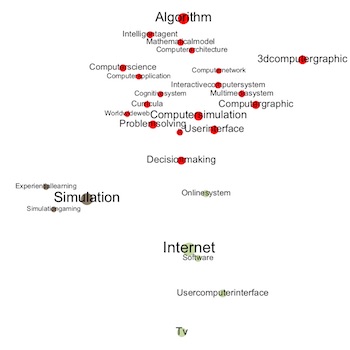
Figure 6. Burst analysis for period 3, 1990-1999 (click to expand).
While educational and computer science documents appear right from the beginning of the period, in this stage we can see a number of keywords that will be important in both areas begin to emerge. In Education/Culture, the terms simulation and experiential learning appear here. We also see the main areas within the Technology community forming: AI (intelligent agent), HCI (user interface), graphics (computer graphics) and networks (computer network).
Stage 4: 2000 to 2009
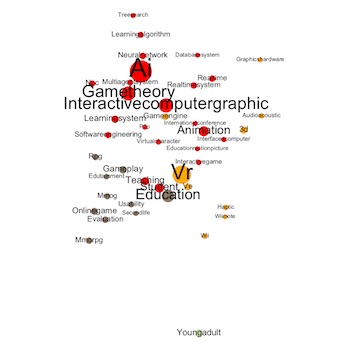
Figure 7. Burst analysis for period 4, 2000-2009 (click to expand).
There is a major increase in keywords, mainly due to the increase in absolute number of documents in the sample. There is an expansion of keywords into areas of culture and form, with specific games and game types featuring (e.g. MMORPG, MMOG, RPG). Gameplay also appears at this stage, and this is another important term in research on the form and culture of games. In education, the term evaluation appears in this stage.
More keywords appear in relation to all main areas of the Technology group: AI (e.g. AI, game theory, neural network), HCI (interfaces computer), Animation (animation) and networks (p2p). The first key topics in the Medical community also appear in this stage, associated with particular technological innovations (e.g. Wii, VR, 3d).
There is one keyword associated with Effects — young adult — but this seems to be appearing as a new term for adolescent.
Stage 5: 2010-2016

Figure 8. Burst analysis for period 5, 2010-2016 (click to expand).
In the Effects group, there are new keywords that reflect a positive attitude to games (active game, exergame) as well as a more negative attitude (game addiction, internet gaming disorder, screentime and sedentary lifestyle). However, the last of these is sometimes used in a negative sense (games are part of a sedentary lifestyle that causes obesity) and sometimes in a positive sense (active games can alleviate the health outcomes of a sedentary lifestyle).
In this most recent stage, there is a marked increase in the Medical community, with new terms in Brain Science (BCI) but especially in rehabilitation (e.g. rehabilitation, stroke). A number of words closely related to rehabilitation also appear in other groups (e.g. Kinect and older adult in Education/Culture; exergame and active game in Effects.
In the Education/Culture community, we see the appearance of both a production-related keyword (game design) and an audience-related keyword (player experience). We also see the surprisingly late entrance of World of Warcraft (Blizzard Entertainment, 2004) in 2011. Game-based learning first enters the sample in 2002 but there is a burst of activity around this word in this later stage, along with gamification and serious games. Also, new game forms and technologies that hold potential for education are found in this stage (Kinect and Augmented Reality).
Terms in Technology continue to appear in this stage (Monte Carlo, Nash Equilibrium) and the new topic of procedural content generation also appears in this stage. In the area of networks new topics related to cloud computing and cloud gaming appear.
In terms of current research fronts in game research, a number of keywords appear between 2014 and 2016 potentially signalling new concepts or technologies (internet gaming disorder, cloud computing, augmented reality), new theoretical or treatment approaches (player experience, stroke) or old techniques and theories applied to games for the first time or in a new way (Monte Carlo, Nash Equilibrium, affective computing).
Discussion
The communities derived from keyword analysis and co-citation analysis broadly correspond to each other, suggesting that these do represent distinct research programmes or communities in game research. There are some exceptions. For example, Computer Science occupies a much smaller part of the network in terms of co-citations than its counterpart in keyword analysis, which is surprising given the number of documents that are based in that field. This can be explained by different citation patterns in the different fields. Conference papers tend to have fewer citations than journal articles, which have fewer citations than books. Conference papers account for a greater percentage of the Computer Science output and so there is a relatively smaller presence in the co-citation network. This justifies the two-prong approach to this analysis, which captures different aspects of game research.
The results of the current research show many commonalities with previous research. The community structures broadly match the 20 research themes identified by Melcer et al. (2015), with four of the six co-citation communities being composed by some combination of these 20 themes. One point that Melcer et al. stress is the importance of education literature in game research, and this is borne out by this analysis too. Not only are there a lot of education keywords and cited authors, but the Education field occupies a fairly central place in both graphs, with strong links to other communities.
The present results also show a division within education based on theoretical perspective. The larger group in the co-citation analysis draws on constructivist educational theory, mainly channelled through James Gee’s highly influential What Games Have To Teach Us About Learning and Literacy (2003), which draws extensively upon Lave and Wenger. The other subgroup is not as clearly defined, but is more indebted to motivational theory, particularly as it has been developed by Malone and Lepper. While these form fairly distinct subgroups there is much cross-pollination. For example, Gee wrote the foreword for the second edition of Marc Prensky’s Don’t Bother Me Mom! I’m Learning (2006), and the architects of intrinsic motivation theory, Malone and Lepper, approvingly cite constructivists such as Bruner and Piaget (Malone, 1981; Malone and Lepper, 1987). The distinction would seem to represent not a stark theoretical schism but a difference in emphasis on the educational factors that are mainly under consideration in a given document.
The burst analysis gives an overview of the topics that have been important across the development of game research. Before the mid-1990s we see work on Technology, education, and especially Effects, with much of the latter taking an experimental approach to the physiological and psychological effects of gaming. This accords with the view that early game research was focused on the effects of gaming (Dyer-Witheford and de Peuter, 2009; Squire 2002), however the inclusion of the term 'adult' as a significant keyword suggests that in this early period games were not seen as merely the domain of children. The effects of games on adults were also of interest to these early game researchers. Similarly, the effects of gaming were not seen as wholly negative. Contrary to Dyer-Witheford and de Peuter’s characterisation of game research between 1972 and 2000 as "condemnatory" (2009, p. xxiv), several keywords associated with positive effects in terms of perception and reaction times are found here.
From the 1990s, we see an increase in new topics in Technology and Education. This is partly explained by the increase in number of documents around this time, but one might also suggest that the technological advances in the game industry in the 1990s, particularly in relation to 3d gaming, networked gaming and game AI was of particular interest to computer scientists. From the 1990s on new keywords continue to emerge in Technology, but they fit fairly consistently into four areas that are established in the 1990s: AI, HCI, animation and networks.
From the 2000s, we begin to see keywords that are associated with the culture and form subgroups. This is partly explained by the increased attention to humanities in the Scopus database from 2001, but it is also due to a real increase in work in these fields, as signalled by the establishment of the Game Studies journal in 2001, the DiGRA conference in 2003 (and the preceding CGDC conference in Tampere in 2002) and the SAGE journal Games and Culture in 2006. With this increase in attention to the culture and form of computer games we also get a greater attention to specific games and game forms. MMORPG, MMOG and Second Life all appear in the burst analysis. This could be seen as a corrective to the lack of attention to differences between different kinds of games in the early effects literature, as discussed by Squire (2002). Attention to specific examples as opposed to representativeness is a key characteristic of the humanities (c.f. Dilthey, 1989/1883), and could be seen as an important contribution of the humanities to game research.
Across the 2000s, the burst analysis shows online games to be of particular interest to scholars, with terms like online game and MMOG appearing here. There seems to be a general lack of attention to offline games in this and other stages. This supports Coavoux et al. (2017), who argue that online games have predominated game studies literature in the 2000s. It seems that this argument is also relevant to game research in other fields. Without a complementary research programme on offline or single-player games there is a danger that results from online multiplayer games come to represent knowledge on all game types.
New research topics often follow changes in the industry and in gaming technology. The Wii enters the sample in 2007, the year after it was released by Nintendo, and becomes an important keyword in rehabilitation as it is used for exercise and rehabilitation research. The release of the Wii — intended by Nintendo to target an older demographic and offer new, more active forms of gameplay — inaugurates a whole cluster of research around exergaming, older adults and rehabilitation. This relationship between industry and academia is even more pronounced in the Technology community. For example, a recent development in this community has been procedural content generation. The term first enters the sample as a keyword in 2006, the same year the highly influential procedurally generated game Dwarf Fortress (Adams, 2006) was released in alpha. The term is picked up by the burst analysis in 2011, the same year that Minecraft (Mojang, 2011) — the game that made procedural content generation a common word for gamers — was released in its full version. This is not to suggest a direct causal relationship between these events, but to point out how important the technological and marketing innovations of the computer game industry are to the development and growth of computer game research, and, perhaps vice versa.
The Wii and its influence on health-related research is part of an increased orientation toward positive effects in recent years. However, the latest stage has also seen a renewed attention to game addiction, as internet gaming disorder appears as a new research topic in 2013. This is probably due to the inclusion that year of Internet Gaming Disorder as a "condition for further study" in the Diagnostic and Statistical Manual of Mental Disorders (American Psychiatric Association, 2013). This is not the first time gaming addiction is discussed in the sample, of course, but prior to 2013 it goes by a range of different names (addiction from 1994; behaviour addiction from 1995, internet addiction and computer addiction from 1999, game addiction from 2005 to name a few). The recognition of Internet Gaming Disorder allows this research to coalesce around an agreed-upon term.
While the current results bear much similarity to Melcer et al’s (2015) research, they reveal two communities not discovered in that previous research: Effects-Communications and Medical-Health. Effects-Communications could in part come under Theme 10 in Melcer et al’s results, in the sub-theme "psychology," but this theme refers more to HCI and user interface design than to effects or addiction. Therefore, while it does capture some of the Communications subgroup of player experience it does not cover the major part of this community. Similarly, Melcer et al. mention under Theme 9 a sub-theme called "cognition" that may seem on first view to relate to some of the work in the Medical-Health community. In fact, this theme relates more to AI than to human cognition. It would therefore better fit within the Technology-Computer Science than Medical-Health community.
Melcer et al. (2015) focus on game research venues to delineate the game research field. These are venues that explicitly define themselves in terms of game research. This method of sampling is defended through Bradford’s law of scattering, which states that most research in a field will be found in the top few journals (Bradford, 1934). However, Bradford’s law can only be applied to a well-integrated field. In a field as dispersed as game research we would expect to find a high diversity of sources, with the most-cited journals not necessarily representative of the full breadth of research. Much of the Effects-Communications research is published in sources that do not explicitly define themselves in terms of game research (e.g. Cyberpsychology, Psychological Science). In comparing Melcer et al’s results with the present results one might conclude that much of the more critical work on games (at least in terms of addiction and effects) tends to take place outside of those game scholarship communities that explicitly define themselves in terms of computer games. A better integration of research derived from communications may help game scholars in these "game" communities reach a fuller picture of computer games.
Melcer et al’s analysis provides support for the anecdotal division in game scholarship between technical (i.e. computer science) and non-technical (i.e. culture, form, application) aspects of game research. While this division is clear in the current results it does not seem to be the most important or fundamental division in game research. In fact, the major division in the network seems to be between Effects-Communications and Health-Medical on the one hand and Education/Culture-Education/Humanities & Social Sciences and Technology-Computer Science on the other. This is how the keywords network breaks down at higher levels of resolution and it is how, with the exception of the pure AI sub-community, the co-citation network breaks down too.
While the topics in Effects have most in common with the cited authors in Communications, some of these topics are treated by authors in Health too. The overlap between Effects-Communications and Medical-Health makes sense in that both communities are most interested in measurable outcomes for players, either in negative terms — games make people more violent, addicted or obese — or in positive terms — games improve cognitive and perceptual abilities, motivate people to exercise, or allow for different forms of cognitive or physical rehabilitation therapy.
There is also some overlap between Technology-Computer Science and Medical-Health, but this is only seen in the keyword analysis. Each community is clearly approaching these topics from quite different perspectives, and this explains why they do not share co-citations. While one community is interested in the development of technologies such as VR and graphical processing units, the other is interested in applying these technologies to the discipline-specific problems of obesity and rehabilitation.
The other major camp — Education/Culture, Humanities and Social Sciences and Technology-Computer Science are mainly connected through design. This seems to be quite a deep connection in the sense that they show up both in the keyword and co-citation analyses. This suggests that other communities are not simply applying technologies of design derived from Technology-Computer Science but also share common intellectual influences in terms of how game design is conceptualised and discussed. This would make design a potentially fruitful area for cross-community collaboration, a recommendation that chimes with Deterding’s (2017, pp. 534-5) suggestion of design as a means for game studies to develop a wider relevance within game research.
Deterding (2017) suggests that another way of driving interdisciplinary research would be to identify "boundary objects" at the border of different game research communities that could serve as a shared point of focus. Table 9 shows a number of potential boundary objects in game research, for example gender (between Education and Humanities & Social Sciences) and problem solving (between Technology and Education). Of course, these different research programmes are often using these terms in different ways, but they do signal potential areas for collaboration.
The current results suggest a number of potential ways in which the gap between Effects-Communications on the one hand and Education/Culture-Education/Humanities & Social Sciences and Computer Science on the other might be bridged in a way that would benefit game research. First, game design is an important bridging research topic. It is a key connector between the central communities of Education and Humanities/Social Science. We find versions of game design in each of the communities across the period, with the sole exception of the Effects community. Similarly, the Communications community does not tend to cite design-related authors. While design could be seen as belonging to the "game-oriented" tradition of research, there are other ways of conceptualising this. For example, the Technology-Computer Science subgroup related to design is in fact not "purely" design but design and analytics. This suggests a conceptualisation of design that closely connects it to player experiences and effects, and that could therefore connect to Communications through the subgroup of player experience. Work on game design — particularly on how designers attempt to create certain effects — may assist researchers interested in establishing positive and negative effects of games on players.
Second, the results show some overlap between the positive effects subgroup of Effects-Communications and the Education community. One of the challenges in educational games has been evaluating their effectiveness in particular situations, and methodological approaches in effects is one way in which this challenge could be met.
Third, the lack of overlap between the Education and Medical-Health communities is somewhat surprising, since there are a number of research projects looking at physical education from a medical perspective. A greater cross-pollination of educational and medical theory and methodology could help develop this area of research.
The results show some potential gaps in game research. While Aphra Kerr, a games scholar who has focussed extensively on the game industries (e.g. Kerr, 2006), features in the top 300 most-cited authors, she is an exception. While other authors may occasionally discuss the game industries, no other authors have this as their main research topic. Furthermore, none of the non-game authors cited are experts on business or industry. This is in contrast to the other topics, where authors are drawing on experts in psychology, design, philosophy, sociology, computer science, communications etc. who are not game experts. The dearth of literature on the games industry was discussed at DiGRA 2016 (Casey et al., 2016), and this seems to be borne out by this analysis. Deterding (2017, p. 533) claims that questions of economics "don’t even figure" in games studies. However, the present results suggest that this relative lack of attention to the business of games is not just a problem in game studies but in game research more widely.
Conclusion and Further Work
While not intended to demonstrate the absolute size of game research as a field, the results here indicate that computer games are a vibrant and growing research area in academia, drawing on a range of topics and intellectual influences from across the university. Possibilities for deepening interdisciplinary collaboration exist where communities are interested in similar topics or draw on similar theoretical influences. For example, communications and design scholars both seem interested in player experiences; while health and education scholars are both interested in theories of learning and motivation.
However, this is a general overview of the field as a whole, and is certainly not intended to be the last word on the intellectual structure of game research. A more granular analysis of individual communities would help to better understand the differences within these communities – for example to tease apart the distinction within the education community between constructivists and motivational theorists. A more focused analysis of this kind could remedy the problem encountered in this project of excluding texts without keywords by following the keyword-creation methodology of Melcer et al (2015). It is hoped that the present article might serve as a platform for these more granular analyses conducted by experts within the specific subdomains identified here.
Scopus has an English-language bias, and this was exacerbated by the fact that the search was performed using English-language keywords. It would be valuable to supplement this analysis with analyses in other languages to compare national/language differences in game research.
Acknowledgements
Much of the research for this article was conducted as a visiting researcher at the Ritsumeikan Centre for Game Studies (RCGS) at Ritsumeikan University, Kyoto, Japan.
References
American Psychiatric Association. (2013). Diagnostic and statistical manual of mental disorders (5th ed.). Washington, DC.
Backhaus, K., Lügger, K., & Koch, M. (2011). The structure and evolution of business- to-business marketing: A citation and co- citation analysis. Industrial Marketing Management, 40, 6, 940-951.
Bastian M., Heymann S., & Jacomy M. (2009). Gephi: an open source software for exploring and manipulating networks. International AAAI Conference on Weblogs and Social Media (ICWSM-09). May 17-20, San Jose, California, USA.
Blondel, V.D., Guillaume, J.L., Lambiotte, R., & Lefebvre, E. (2008). Fast unfolding of communities in large networks. The Journal of Statistical Mechanics: Theory and Experiment. 2008, P10008.
Bradford, S.C. (1934). Source of Information on Specific Subjects. Engineering, 26, 85-86.
Bragge, J., Thavikulwat, P. and Töyli, J. (2010). Profiling 40 Years of Research in Simulation & Gaming. Simulation & Gaming, 41, 6, 869-897.
Carter, M., Downs, J., Bjorn, N., Harrop, M. & Gibbs, M. (2014). Paradigms of Games Research in HCI: A Review of 10 Years of Research. Paper presented at CHI PLAY’14, October 19–21, 2014, Toronto, ON, Canada.
Chen, L. C. & Lien, Y. (2011). Using author co-citation analysis to examine the intellectual structure of e-learning: A MIS perspective. Scientometrics, 89, 3, 867- 886.
Coavoux, S., Boutet, M. & Zabban, V. (2017). What we know about games: A scientometric approach to game studies in the 2000s. Games and Culture, 12, 6, 563-584.
De Solla Price, D.J. (1965). Networks of scientific papers. Science, 149, 3683, 510-515.
Deterding, S. (2017). The Pyrrhic victory of game studies: Assessing the past, present, and future of interdisciplinary game research. Games and Culture, 12, 6, 521-543.
Dilthey, W. (1989). Introduction to the Human Sciences. Princeton, NJ: Princeton University Press.
Dyer-Witheford, N. & de Peuter, G. (2009). Games of Empire: Global capitalism and video games. Minneapolis: University of Minnesota Press.
Eom. S. (2009). Author Cocitation Analysis. Quantitative methods for mapping the intellectual structure of an academic discipline. Hershey, PA: Information Science.
Ferreira, J., Fernandes, C. & Ratten, V. (2016). A Co-Citation Bibliometric Analysis of Strategic Management Research. Scientometrics, 109, 1, 1-32.
Gee, J.P. (2003). What Video Games Have To Teach Us About Learning and Literacy. New York, NY: Palgrave Macmillan.
Glänzel, W. (2007). Characteristic scores and scales. A bibliometric analysis of subject characteristics based on long-term citation observation. Journal of Informetrics, 1, 1, 92–102.
Kerr, A. (2006). The Business and Culture of Digital Games. London, UK: SAGE.
Kleinberg, J. (2002). Bursty and Hierarchical Structure in Streams. 8th ACM SIGKDD International Conference on Knowledge Discovery and Data Mining. Edmonton, Alberta, Canada. July 23-26, 2002.
Malone, T.W. (1981). Toward a Theory of Intrinsically Motivating Instruction. Cognitive Science. 4, 333-369.
Malone, T.W. and Lepper, M.R. (1987) Making Learning Fun: A Taxonomy of Intrinsic Motivations for Learning. In: Snow, R.E. and Farr, M.J., Eds., Aptitude, Learning and Instruction III: Conative and Affective Process Analyses. Hillsdale, NJ: Lawrence Erlbaum.
Mäyrä, F. (2009). Getting into the Game: Doing Multi-Disciplinary Game Studies. In: Bernard Perron and Mark J.P. Wolf (eds.), The Video Game Theory Reader 2 (pp.313-329). New York: Routledge.
Mäyrä, F. and Sotamaa, O. (2017). Need for perspective: Introducing the special issue "Reflecting and evaluating game studies". Games and Culture, 12, 6, 495-498.
Melcer, E., Chen, Z., Nguyen, T.-H. & Ibister, K. (2015). Game Research Today. Analyzing the academic landscape 2000-2014. The 10th International Conference on the Foundations of Digital Games (FDG 2015), Pacific Grove, CA, USA.
O’Donnell, C., Banks, J., Czarnota, J., Deterding, S., Kultima, A., Nieborg, D., Sandovar, A. (2016). "Why Production Studies? Why Now?", [Panel] 1st International Joint Conference of DiGRA and FDG, August 3, 2016, Dundee, Scotland.
Prensky, M. (2006). "Don’t Bother Me Mon, I’m Learning!": How computer and video games are preparing your kids for twenty-first century success and how you can help! St. Paul, MN: Paragon House.
Quandt, T., van Looy, J., Vogelgesang, J., Elson, M., Ivory, J.D., Consalvo, M. … Mäyrä, F. (2015). Digital game research: A survey study on an emerging field and its prevalent debates. Journal of Communication, 65, 975-996.
Sci2 Team. (2009). Science of Science (Sci2) Tool. Indiana University and SciTech Strategies, https://sci2.cns.iu.edu.
Small, H. (1973). Co- Citation in the Scientific Literature: A new measure of the relationship between two documents. Journal of the American Society for Information Science, 24, 4, 265-269.
Smith, B. (2008). Twenty-First Century Game Studies in the Academy: Libraries and an emerging discipline. Reference Services Review, 3, 2, 205-220.
Squire, K. (2002). Cultural Framing of Computer Games. Game Studies. 2, 1. Retrieved July 6, 2017.
Wallace, M.L., Gingras, Y. & Duhon, R. (2008). A new approach for detecting scientific specialties from raw cocitation networks. Journal of the American Society for Information Science and Technology. 60, 2, 240–246.
White, H.D. (2003). Author Cocitation Analysis and Pearson’s r. Journal of the American Society for Information Science and Technology, 54, 13, 1250-1259.
Zhao, D. & Strotmann, A. (2015). Analysis and Visualization of Citation Networks. Morgan & Claypool.
Ludography
Adams, T. (2006). Dwarf Fortress. [Windows]. Bay 12 Games.
Blizzard Entertainment. (2004). World of Warcraft. [Windows]. Blizzard Entertainment.
Mojang. (2011). Minecraft. Mojang.